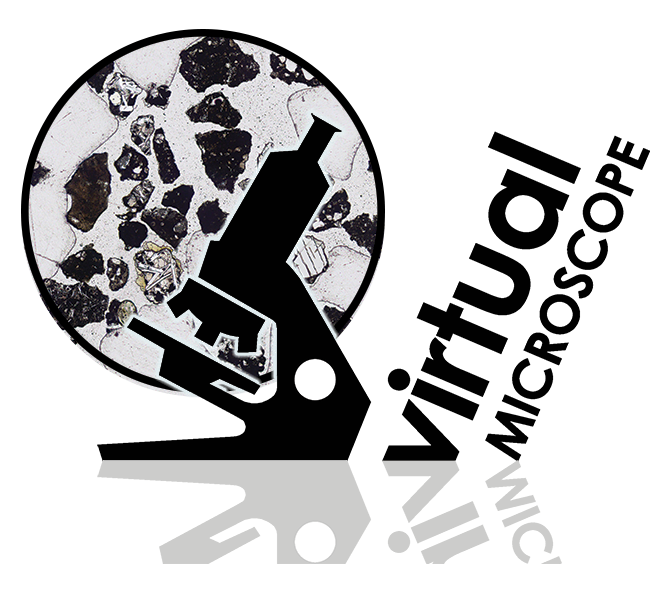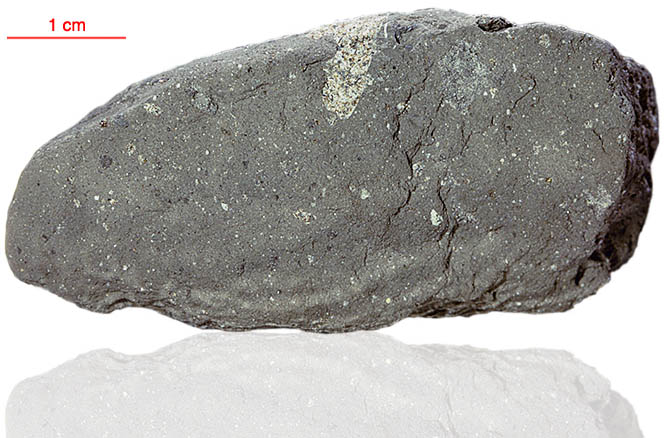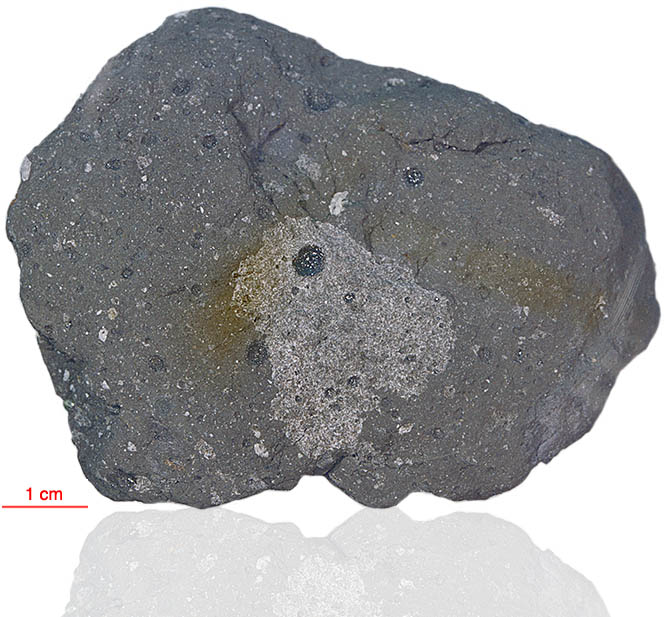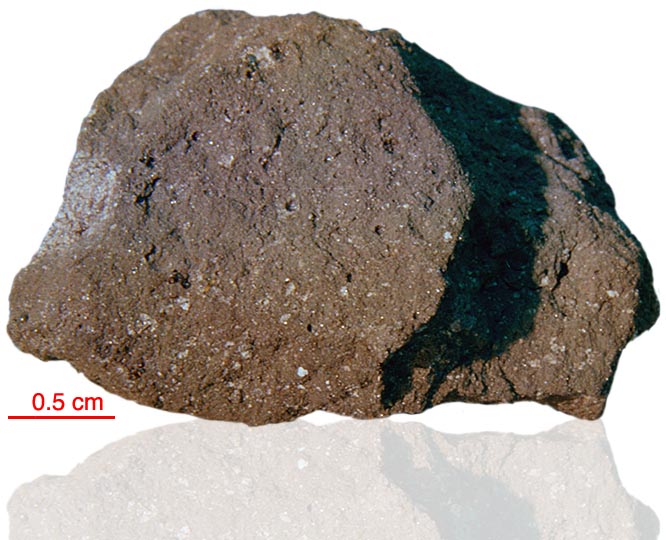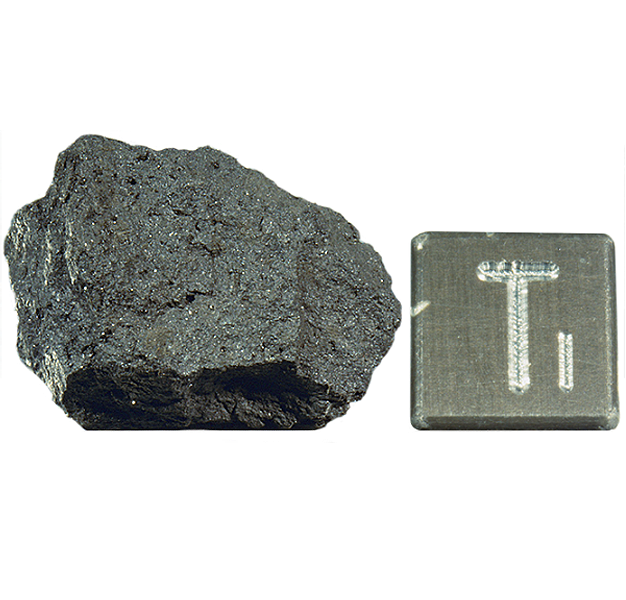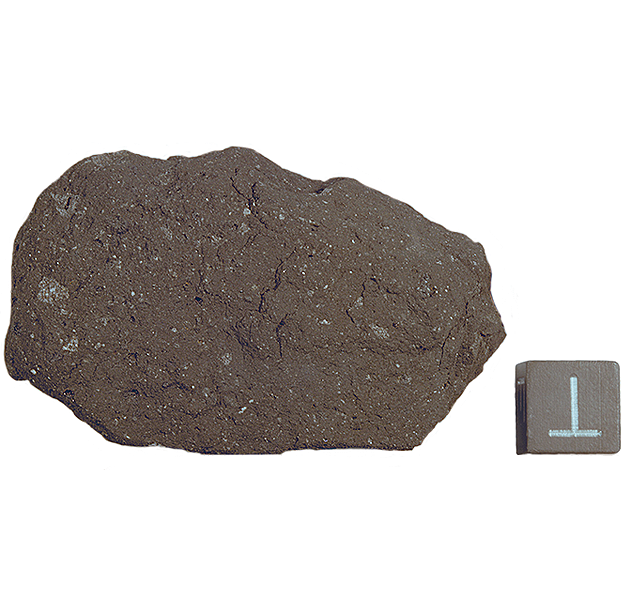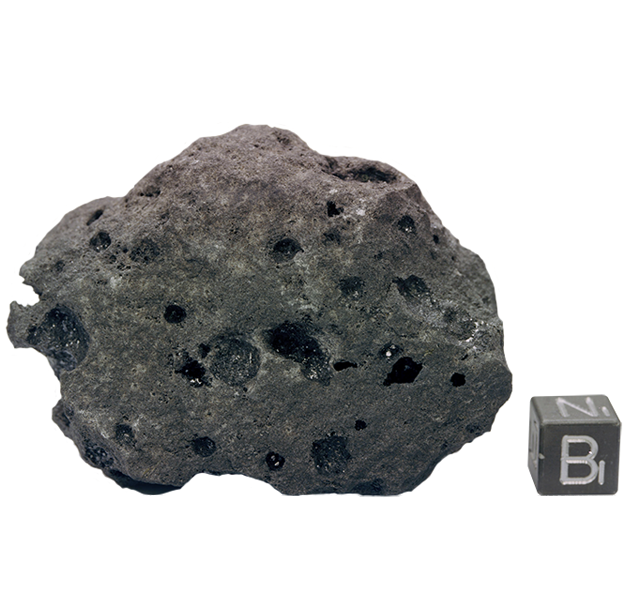
Fact sheet
10071 is a high-Ti basalt with up to 15% ilmenite (weight 190 grams) and two distinct lithologies. It is 3.68 billion years old. The sample contains armalcolite, a rare Mg-Ti oxide species named in honour of the three Apollo 11 astronauts (Neil ARMstrong, Buzz ALdrin and Michael COLlins). This mineral was first discovered in Apollo 11 samples, but has since been found elsewhere on the Moon and in lamproite dykes here on Earth (see http://www.minsocam.org/ammin/AM60/AM60_566.pdf). The sample is notable for its zoned pyroxene (augite-pigeonite) and small but significant olivine content (with crossed polars [xpl] many of the olivine crystals appear blue). The accessory mineral assemblage includes troilite, phosphate and cristobalite.
Further details of this and other Apollo samples are here: http://curator.jsc.nasa.gov/lunar/.
See also Haggerty S.E., Boyd F.R., Bell P.M., Finger L.W. and Bryan W.B. (1970) Opaque minerals and olivine in lavas and breccias from Mare Tranquilitatis. Proc. Apollo 11 Lunar Sci. Conf. 513-538.
The Apollo 11 samples create an iconic collection since they were the first rocks collected by humankind that were returned to Earth from another solar system body. The Apollo 11 team collected and returned 22 kg of rock and soil samples.
Apollo 11 launched from Cape Kennedy on 16 July 1969. An estimated 530 million people watched Armstrong's televised image and heard his voice describe the event as he took "...one small step for a man, one giant leap for mankind" on 20 July 1969.

